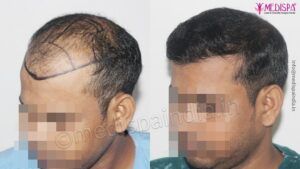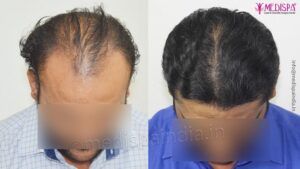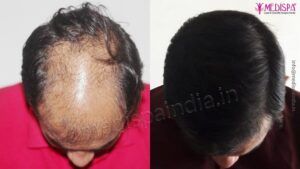
Hair transplantation has seen a rise in popularity in recent years. Initially, the procedure lacked a solid foundation. However, with the introduction of new techniques, the surgery has become highly successful. Expect permanent results and natural-looking hair growth from a hair transplant. India is a top destination for hair transplants globally, attracting customers from various countries. Consider visiting hair transplant in India due to its affordable costs and top-notch facilities available at reputable clinics.
What is hair transplant?
Hair transplant involves harvesting follicular grafts from the donor area during a minimally invasive surgical procedure. The decision to extract these grafts is based on the density of hair in the donor area. Once the hair grafts are extracted and designed for the hairline, they are transplanted to the recipient’s bald area. There are two main techniques for hair transplant, distinguished by the method used to harvest the grafts. The FUT hair transplant technique involves taking a small piece of scalp tissue from the donor area, dissecting each individual follicle, and then transplanting them to the recipient’s bald area.
During the FUE process, individual hair follicular grafts are extracted using a surgical tool and subsequently transplanted to the recipient location. A newer approach to address severe baldness involves combining FUT and FUE, enabling the extraction of over 4000 grafts and offering further benefits compared to using either method independently.
Steps of hair transplant procedure
The hair transplant procedure is favored by individuals experiencing hair loss, with many opting for it to address facial hair loss. The process is relatively straightforward, but it requires precision. To achieve optimal results, thorough planning is essential. Prior to recommending the best hair transplant approach, the doctor should conduct a comprehensive examination. To perform a hair transplant, the hair roots from the donor area must be extracted and then transplanted to the balding area. The donor area contains the permanent hair roots, typically found on the back and sides of the head, chest, axilla, or beard. The implantation of permanent hair roots ensures lasting results after a hair transplant.
Concerning question: Whether it needs shaving or not!
The issue of whether or not shaving is necessary for a hair transplant is a common concern among individuals considering the procedure. Many people are hesitant to undergo a hair transplant because they do not want to have their head shaved. Therefore, it is natural to wonder if it is possible to avoid shaving during a hair transplant.
At our clinic, we frequently receive inquiries from patients, particularly women and young individuals, asking whether or not shaving is required for a hair transplant. The answer to this question depends on the specific technique chosen for the procedure.
There are two main techniques that we employ for hair transplants: FUT (Follicular Unit Transplantation) and FUE (Follicular Unit Extraction). The choice between these techniques is based on various factors such as the number of hair follicles needed, the extent of baldness, the patient’s age and gender, and the quality of hair roots available in the donor area.
Ultimately, the decision regarding which technique to use is determined by the hair transplant surgeon. It is important to consult with the surgeon to determine which technique allows for the avoidance of shaving during the procedure.
Is it necessary to shave the head for a FUT hair transplant?
In a FUT hair transplant procedure, a strip of hair is removed from the back and sides of the head. The donor area is then stitched back together using a specialized technique called trichophytic closure. A team of technicians carefully separate the hair roots under high magnification. These hair roots are then transplanted to the desired bald area. This technique can provide approximately 3000 – 3500 hair roots, making it suitable for individuals with high grade baldness or progressive hair loss. The advantage of this technique is that shaving the head can be completely avoided. Therefore, it is a suitable option for females, youngsters, or anyone who prefers to avoid shaving.
Shaving is a requirement for FUE hair transplant as each hair root is individually extracted from the donor area using a punch shaped device. The donor area is inspected for hair root availability and then the roots are pulled out and planted in the desired bald area. This technique can yield around 2000 – 2500 hair roots in a single session. Shaving the area is essential for better visibility during the procedure, making it unsuitable for those seeking a non-shaving option.
Shaving or no shaving: What is possible?
We recommend the most effective technique for you, but ultimately, your personal preference is what we prioritize. If you choose not to shave your head, we will respect that and recommend the most suitable option for you. For more information on hair transplant procedures, visit us at Medispa hair transplant clinic in Delhi or Jaipur. Schedule your appointment now.
Who can go for hair transplant with no shave procedure?
- Individuals seeking to keep their cosmetic procedures private can now opt for a hair transplant without the need for shaving.
- Professionals in corporate or client-facing positions often choose the no-shave method for their hair transplant to maintain a polished appearance.
- Women who find it challenging to reveal a cropped hair look in public tend to opt for the no-shave technique for their hair transplant.
- Individuals looking to quickly resume their daily routines may find the no-shave approach to be a convenient option for their hair transplant.







